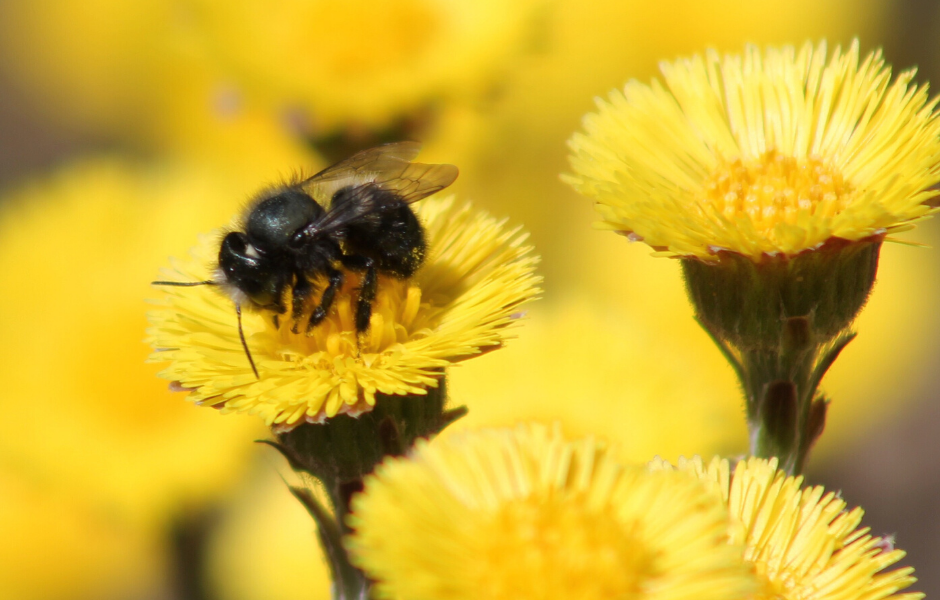
How to Construct a Mason Bee-Friendly Habitat at Home
Did you know that there are over 800 species of native bees in Canada?
These bees are critical for our natural ecosystems and food production.
There are two main things native bees need: flowers for pollen and nectar and safe nesting sites.
In our previous blog, we offered some valuable tips on how to create the perfect pollinating environment in your yard to attract these important pollinators.
In this second part, we’ve partnered with Pollinator Partnership Canada again to give you expert advice on how to provide nesting for mason bees in your yard!

Mason bee houses are gaining in popularity and it’s no wonder.
These magnificent, docile, solitary bees help pollinate our gardens, allow us to observe nature up close, and readily make their homes in artificial houses.
Mason bee homes are pretty simple and they can be bought at stores or online or homemade.
Unfortunately, many of them are not constructed so that they properly support healthy and thriving mason bees.
However, if you keep just a few things in mind, you’ll have a buzzing and beautiful bee house.
Here are a few guidelines:
Houses must be easy to clean: Mason bee cocoons need to be removed, washed, and stored each winter. If not, the cocoons will build up pests; this can hurt the developing bees in the house and potentially spread pests and diseases to wild-nesting bees.
Easy to clean houses can come in different types:
A. Reeds or paper that is opened for winter cleaning (single use)
B. Straws inserted into blocks with holes
C. Modular blocks (see pictures below)
Tunnels need to be the right depth and width: Mason bees prefer tunnels that are 7.5 mm to 9.5 mm (19/64 – 3/8 ins) in diameter.

The depth of the holes may depend on the length of your drill bits but ideally should be 15 to 18 cm long (6 to 7 ins).
Shorter tunnels can cause an unbalanced male/female ratio and predation.
Tunnels also need to be closed at the back.
Face your bee house towards the sun and protect it from the elements: Place your house at least 1m (3ft) above the ground, have it facing towards the sun, and have a small ‘roof’ which can help protect it from rain.
Be sure to provide food and nesting material for the bees: Mason bees don’t like to travel far. Have plants for them in your yard that are blooming when they emerge in the spring and some moist soil for the mothers to make their nests. (See our previous blog for tips on providing food for bees).
The photographs below give you an idea of the main things to look for if you’re buying a mason bee house or plan to build your own.




Help us spread the word and get people BUZZING about Pollinator Week every year by sharing this blog.



0 comments